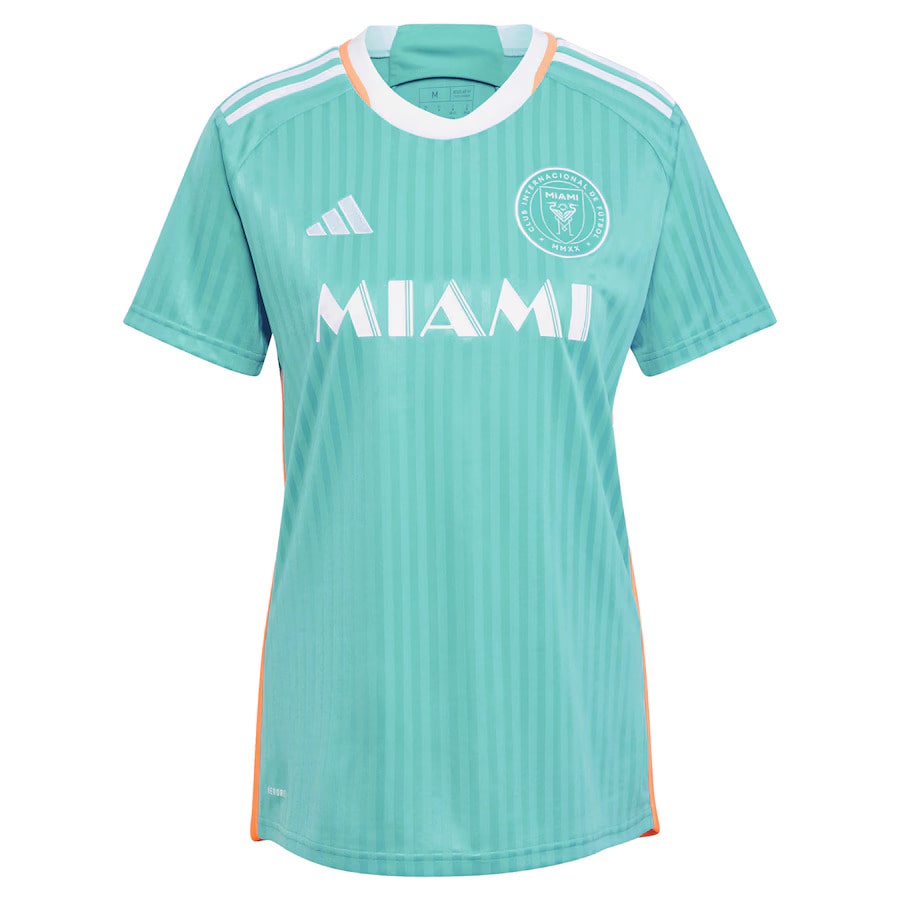Football, as one of the most popular sports around the world is not just evolving in terms of game play, tactics, and fan involvement as well as in terms also of sports uniforms. As football's style has evolved, kits beginning with woolen-based jerseys and modern, high-tech equipment, reflects the sport's development and growing global influence. It doesn't matter whether you're a supporter of the old school clubs or the newer ones such as Inter Miami, football clothing is a vital element of football Each season has a different chapter in the history of kit.

The Early Days: Simple Designs and Heavy Materials
In the beginning days in football's history, the players wore simple woolen uniforms, generally in the color of their team, often with little regard for comfort or tech. The jerseys were heavy and abrasive. This could result in significant discomfort during games particularly in hot temperatures. The shirts were devoid of logos for sponsors or modern branding and the design was simple. Soccer uniforms during the 18th to early 20th centuries were typically made of materials such as wool, which, though durable, weren't air-tight or light.
The most notable characteristic of football kits during the period was their simplicity. Teams were able to choose plain designs and minimal adornment. Kit Inter Miami for example however, despite being a relatively new club it evokes a certain nostalgia for older kits, emphasizing sleek simplicity and style while still being a modern squad.

The 1960s-1970s: Introduction of Synthetic Materials
In the 1970s and 1960s, football uniforms were evolving through the introduction of artificial materials. Polyester was soon a standard choice as it was a lighter and breathable option to wool. The football kit's design also started with a modern look through the introduction of logos for teams and numbering on the tops of the shirts. In this era, we also saw the arrival of sponsors' logos although they were still rather Kit Inter Miami modest relative to today's kits.
The time was marked by the introduction of kits that were not just functional but also trendy. In the 1970 World Cup, for example included the famous Brazilian jersey in yellow that was a symbol of footballing excellence and global identity. The innovative design concepts of the 1970s set the scene to make future modifications, which made football kits an integral part of the sport's image.

The 1980s-1990s: Commercialization and Bold Designs
In the late 1980s and early 1990s, football uniforms became more commercialized. The logos of sponsors increased in size and became more prominent, and teams started to experiment with more colorful designs. The era also saw the introduction of short-sleeve shirts becoming the norm, even though longer-sleeve tops were still worn at warmer matches. Shorts for football were smaller and more comfortable to the streamlined design and style of kits.
The 1990s also witnessed the debut of strikingly bold designs that featured bright colors, geometric patterns, as well as daring new designs. Iconic kits like Manchester United's 90s uniform or AC Milan's black-and-red striped jerseys were able to attract a lot of interest. Also that was happening, officially-sponsored sponsors began to appear in larger positions on tops of the shirts, creating kits that appeared more as billboards instead of traditional team uniforms.
At the time, teams such as Inter Milan (whose kits are a visual reflection of Italy's football legacy) began to adopt more original designs, and mixing traditional colors and modern designs. In the 1990s, football kits were now almost identical to the players themselves, representing the character of the team on and off the pitch.
The 2000s: Technological Innovation and Performance
As football became more globalized in the early 21st century, kit manufacturers began to focus heavily on performance-enhancing technology. The 2000s were the time for the increase in lighter, water-wicking materials such as Adidas' ClimaCool or Nike's Dri-FIT technology that helped players remain comfortable and dry in the hottest games.
The designs of the shirts were also sleeker with subtle patterns as well as cut-offs that were streamlined. The players' kit was not just functional, but additionally cutting-edge, with ventilators, stretchable fabrics and tailor-made fittings. Sponsorships also increased in importance, with companies like Nike, Adidas and Puma in the leading pack in kit manufacturing and influencing the fashions for football teams all over the world.
This was also the period when big clubs, such the likes of Barcelona as well as Real Madrid, began to make significant investments in their branding and design kits that reflected their modern sophisticated, polished image.
The 2020s: Sustainability, Personalization, and Bold Statements
The latest development in football uniforms has been focused on green practices, personalization, and creating kits with bold designs both on and off the field. As of the 2020s have seen a growing demand for sustainable materials as many clubs have shifted to recyclable fabrics and environmentally sustainable manufacturing methods. This trend is in line with a increasing global focus on sustainability as fans players, and clubs alike seek to lessen their environmental impact.
When it comes to design the new millennium has been a time of emergence of more personalized kits. Fans now have the choice to add the name as well as number on their jerseys, giving the jersey a